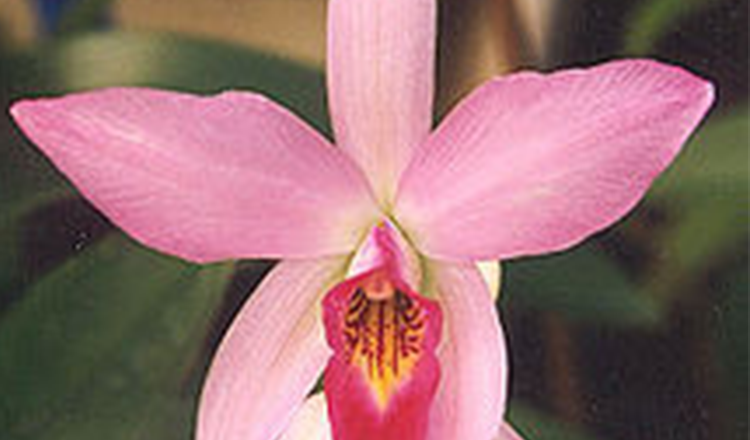Laelia

Laelia is a small genus of 25 species in the orchid family (Orchidaceae).[1] Laelia species are found in areas of subtropical or temperate climate in Central and South America, but mostly in Mexico.[2] Laelia is abbreviated L. in the horticultural trade.[3]
Mostly epiphyte herbs (with a few lithophytes) with laterally compressed pseudobulbs.[2][4] One to four leathery or fleshy leaves are born near the top of each pseudobulb, and can be broadly ovate to oblong.[4] The inflorescence is a terminal raceme (rarely a panicle).[2][4] The flowers have 8 pollinia; petals are of a thinner texture than the sepals; sepals and petals are of similar shape, but the sepals being narrower; the lip or labellum is free from the arched flower column.[2][4]
Species of Laelia can be found from western Mexico south to Bolivia, from sea level to mountain forests.[2][5]
The genus Laelia was described as part of subfamily Epidendroideae by John Lindley.[6] Brazilian Laelias, after being classified for several years under Sophronitis,[7] have now been placed in the genus Cattleya.[8] Moreover, species formerly placed in the genus Schomburgkia have been moved either to the genus Laelia or Myrmecophila.[9]
Laelias can be grown fastened to tree trunks, as long as the tree won’t cast a deep shadow; they can also be fastened to a piece of branch or a slab of cork so they can be hung in a place facing south.[2] The growing medium must have good drainage, rapidly drying after watering; pieces of pine bark, charcoal or pebbles are good choices.[2] If grown mounted they definitely need approximately 50–70% humidity, while cooler temperatures increase the blooming process.[10] Watering can be done 2–3 times a week, but with lower frequency in winter.[2] Fertilization can be done with a very dilute solution, twice a month especially during growing season (May to November in Northern Hemisphere).[2]
